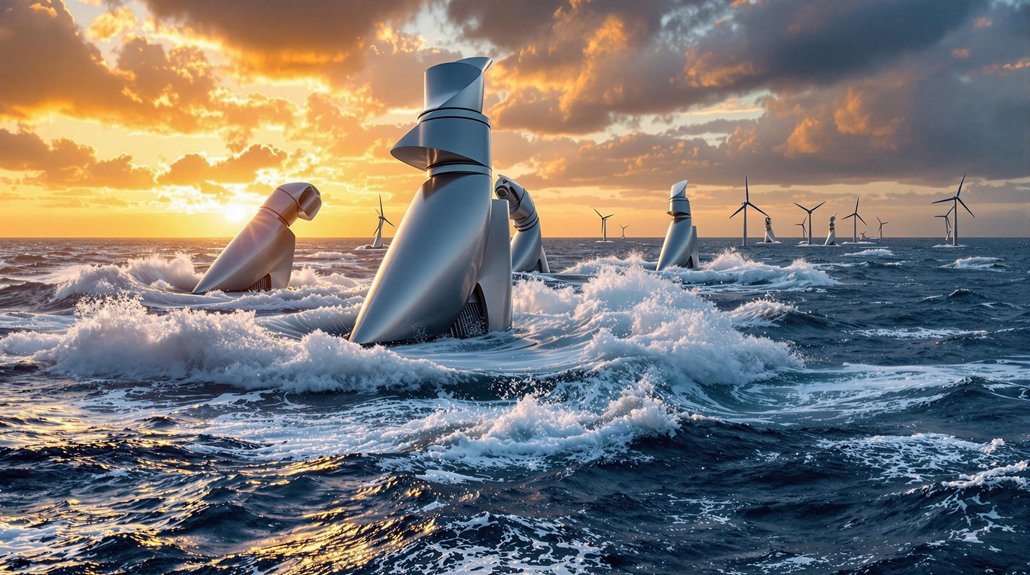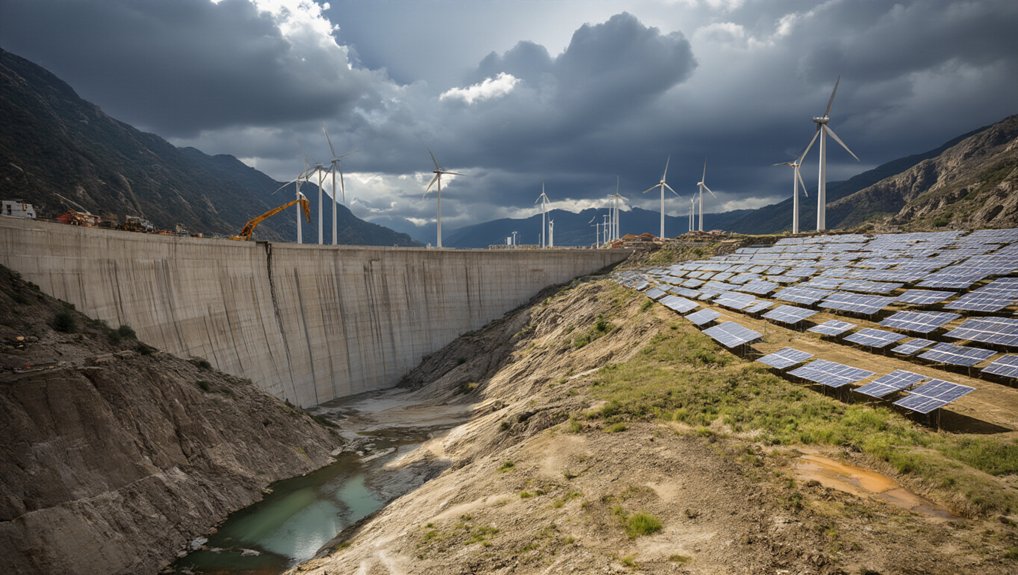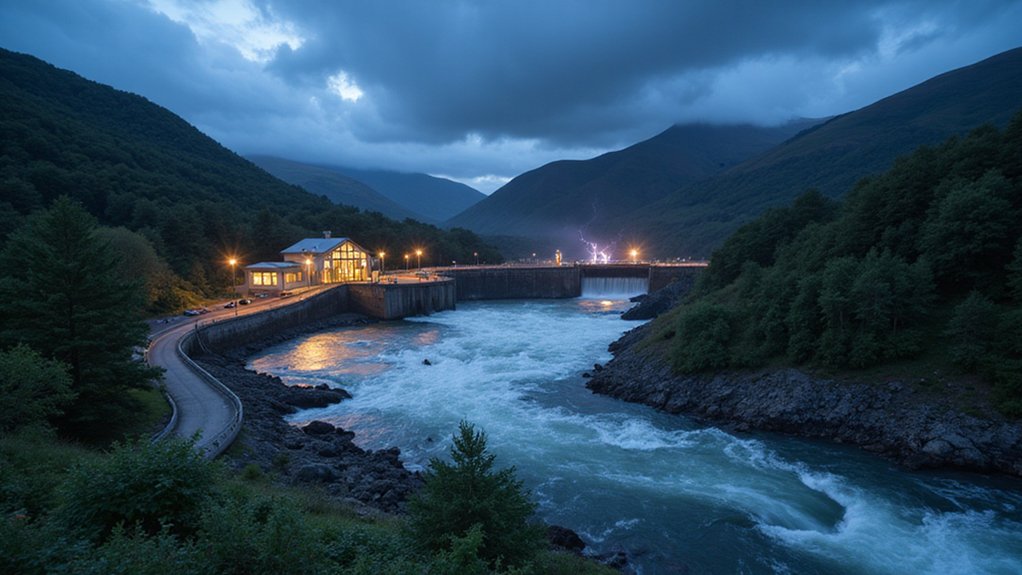The wave and tidal energy market is expanding rapidly, projected to grow from $1.1 billion in 2024 to $21.8 billion by 2034. This represents a remarkable 34.8% annual growth rate. Tidal energy currently dominates with 58.3% market share, while Europe and Asia-Pacific lead regional development. Companies like ORPC and Minesto are pioneering innovative technologies despite high initial costs. This ocean power revolution could create over 80,000 jobs by 2030.
While solar and wind energy have dominated renewable energy headlines for years, a powerful new player is making waves in the clean energy sector. The global wave and tidal energy market is set to explode from $1.1 billion in 2024 to a massive $21.8 billion by 2034, growing at an impressive 34.8% annually.
Ocean power surges forward, promising to transform the renewable energy landscape with explosive market growth.
Tidal energy currently leads the market with a 58.3% share, while tidal stream generators account for 30.3%. Wave energy converters are gaining popularity as the technology improves. Recent innovations like the Dragon 12 tidal power plant launched in February 2024 are now producing utility-grade tidal power. Marine energy technologies represent an emerging field that harnesses ocean’s natural power while producing no smoke or pollution. The primary use for ocean energy is electricity generation, which makes up 87.2% of applications. Other growing uses include desalination, coastal defense, and powering remote communities.
Europe dominated the market in 2023 with a 46.2% share, with the UK, France, and other coastal nations investing heavily in ocean power projects. However, Asia-Pacific led in 2024 with 45.2% of the market and shows the fastest growth rate moving forward. North America remains the second largest regional market overall.
The rapid growth comes from several key factors. Governments worldwide are offering financial support and incentives for clean energy. Unlike solar and wind, ocean power is highly predictable and reliable. Technological improvements have also made these systems more efficient and cost-effective.
Companies leading the ocean energy revolution include ORPC, Orbital Marine Power, and AW Energy. SIMEC Atlantis Energy operates the world’s largest tidal array, while innovative firms like Minesto are developing underwater “kite” technology to capture energy from ocean currents. Minesto recently received selection for the Global Innovation Accelerator program, strengthening their business development initiatives in Asia.
Despite the promising outlook, challenges remain. Initial costs are high compared to other renewables. Environmental impact concerns require more study. Grid integration and infrastructure needs present hurdles.
Still, the sector could create over 80,000 jobs by 2030. As climate concerns grow and technology improves, ocean power is positioned to become a major force in the global energy shift, tapping into Earth’s most abundant resource.








